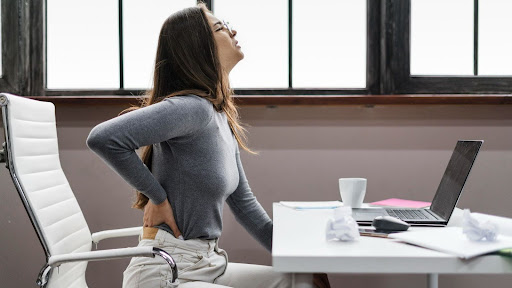Neck pain is one of the most common musculoskeletal complaints affecting people across age groups and professions. From office workers and students to athletes and homemakers, nearly everyone experiences it at some point in their lives. For many in India, neck pain is now an everyday concern due to long hours of screen time, poor posture, and increased stress levels. Thankfully, the majority of neck pain cases are not caused by serious medical conditions and can be treated effectively at home using simple, non-surgical strategies.
In this blog, we explore the most common causes of neck pain and provide 10 effective remedies and stretches for neck pain relief that can be safely performed at home. These evidence-backed methods include exercises to improve flexibility, reduce muscle tension, and prevent recurrence.

Common Causes of Neck Pain
Understanding the root cause of neck pain is essential for effective treatment and long-term relief. Here are the primary contributors:
Poor Posture and Sedentary Lifestyle
Prolonged periods of looking down at a mobile device or hunching over a laptop can strain the cervical spine and surrounding muscles. This poor alignment weakens neck muscles and leads to stiffness and discomfort. Over time, it may even cause long-term musculoskeletal imbalances.

Stress and Muscle Tension
Psychological stress doesn’t just affect mental well-being; it also manifests physically. Many individuals unconsciously tense their shoulder and neck muscles when under stress, resulting in chronic tightness and decreased mobility in the upper back and cervical region.

Sleeping Position or Inadequate Pillow Support
Improper sleeping positions or using a pillow that does not support the natural curve of the neck can lead to pain that persists throughout the day. Ideally, the neck should be in a neutral position to reduce strain during sleep.
10 Effective Remedies and Stretches for Neck Pain Relief
If you’re wondering how to relieve neck pain without medication or invasive procedures, these ten remedies and neck exercises offer a safe, effective solution.
Neck Glide Stretch
This is one of the most effective neck stretches to improve flexibility and correct forward head posture.
- Sit or stand with your spine straight.
- Gently glide your head forward, keeping your chin parallel to the ground.
- Hold for 5 seconds, then return to the neutral position.
- Repeat 5–10 times.
This stretch helps reduce strain on the cervical spine and enhances neck alignment.
Neck Rotation
Neck rotation improves joint mobility and releases muscular stiffness.
- Slowly turn your head to one side until you feel a gentle stretch.
- Hold for 5 seconds, then return to the centre.
- Repeat on the opposite side.
- Perform 10 repetitions per side.
This is ideal for people who sit at desks for extended periods.
Lateral Neck Stretch
This stretch targets the muscles on the side of the neck.
- Sit upright.
- Tilt your head towards one shoulder while keeping the opposite shoulder relaxed.
- Hold for 20–30 seconds.
- Switch sides and repeat.
- Do 2–3 sets.
Regular practice can significantly reduce the stretches for neck tension caused by poor posture.
Chin Tucks
A vital corrective neck exercise to reverse “tech neck” and strengthen deep cervical flexors.
- Sit or stand with your back straight.
- Gently tuck your chin inwards without tilting your head.
- Hold for 5 seconds and relax.
- Perform 10–15 repetitions.
This simple movement helps realign the head and neck, reducing stress on the cervical discs.
Shoulder Rolls and Shrugs
These neck mobility exercises help release tension in the trapezius and shoulder muscles.
- Roll your shoulders forward in a circular motion 10 times.
- Repeat in the opposite direction.
- Follow up with 10 shoulder shrugs, holding each for 2 seconds.
Incorporating these into your routine improves circulation and posture.
Heat and Cold Therapy
Alternating between heat and cold packs can accelerate neck pain relief.
- Use a warm towel or heating pad for 15–20 minutes to relax muscles.
- Apply a cold pack for 10–15 minutes to reduce inflammation and numb sharp pain.
Avoid direct skin contact with hot or cold surfaces to prevent burns.
Over-the-Counter Pain Relief (NSAIDS)
For acute neck pain, non-steroidal anti-inflammatory drugs (NSAIDS) like ibuprofen can reduce inflammation and pain. However, always consult a healthcare provider before use, especially if you have existing medical conditions.
Massage and Trigger Point Release
Massage therapy improves blood flow, eases muscle knots, and provides immediate relief.
You may:
- Gently massage the base of your skull and upper back.
- Apply pressure to trigger points using your fingers or a massage ball.
- For chronic pain, consult a specialist for targeted myofascial release techniques.
At Alleviate Pain Clinic, we offer specialised trigger point therapies to address deep muscle tension without surgery.
Maintain Proper Posture During Activities
Correcting your posture is one of the simplest yet most effective home remedies for neck pain.
- Sit with your back straight and shoulders aligned.
- Keep your screen at eye level.
- Avoid slouching or holding your phone between your ear and shoulder.
Using an ergonomic chair and workstation setup can make a noticeable difference.
Gentle Yoga or Mobility Exercises
Incorporate yoga and stretching into your weekly routine to increase flexibility and reduce stiffness.
- Try yoga poses like Child’s Pose, Cat-Cow Stretch, or Thread the Needle.
- Practice controlled breathing to reduce stress-induced muscle tension.
These neck mobility exercises promote relaxation and prevent recurrence.
Preventing Neck Pain in the Future
While short-term remedies help alleviate symptoms, prevention is the key to long-term neck pain relief. Here’s what you can do:
- Exercise Regularly: Engage in neck, shoulder, and back-strengthening exercises.
- Adjust Your Workstation: Use a chair with proper lumbar support and a desk setup that promotes good posture.
- Use the Right Pillow: Choose a pillow that supports your neck’s natural curve—memory foam or orthopaedic pillows are often recommended.
- Take Frequent Breaks: Follow the 20-20-20 rule while working—every 20 minutes, look at something 20 feet away for 20 seconds.
- Avoid Cradling Phones: Use headphones or speaker mode to avoid compressing the neck.
When to Seek Professional Help
While most neck pain cases improve with conservative care, you should consult a specialist if:
- Pain persists beyond 7–10 days despite home treatment.
- There is numbness, tingling, or weakness in your arms or fingers.s
- Pain is accompanied by severe headaches or dizziness.
- You have a history of trauma (e.g., whiplash)
- Pain interferes with daily activities and sleep.
At Alleviate Pain Clinic, our team of pain specialists focuses on non-surgical treatments for neck, back, and shoulder pain. We design customised treatment plans, including physiotherapy, manual therapy, dry needling, and advanced interventional techniques to address your condition without the need for surgery.
Conclusion
Neck pain can stem from common daily habits, postural issues, or stress. The good news is that with a proactive approach using neck stretches, ergonomic awareness, and self-care techniques, you can achieve lasting neck pain relief.
Simple practices like chin tucks, lateral neck stretches, and mobility exercises go a long way in preventing and relieving neck pain. However, if your symptoms persist or worsen, seeking help from a specialised clinic is essential.
Alleviate Pain Clinic offers comprehensive, non-surgical pain treatment options tailored to your condition. Don’t let neck pain affect your quality of life—get the right treatment today.
FAQs
Applying a cold pack to reduce inflammation, followed by gentle heat therapy to relax tight muscless offers quick relief. You can also perform light neck stretches and take over-the-counter NSAIDS after consulting a doctor.
To relieve a "locked" or stiff neck, perform gentle neck rotations, chin tucks, or lateral neck stretches. Applying heat, maintaining an upright posture, and avoiding sudden movements also help restore mobility safely over time.
Chin tucks are among the most effective exercises for neck pain. They strengthen deep cervical muscles, correct posture, and reduce strain. Other beneficial exercises include shoulder rolls, neck rotations, and lateral stretches.
Sleep on your back or side using a supportive pillow that aligns with your neck's natural curve. Avoid sleeping on your stomach, and consider using an orthopaedic or memory foam pillow for better support.
While no drink cures neck pain instantly, staying hydrated reduces muscle stiffness. Anti-inflammatory drinks like turmeric milk, ginger tea, or green tea may help reduce pain linked to inflammation or muscle tension.
Apply a warm compress for two minutes, then do slow neck rotations and chin tucks. Massage the tense muscles at the base of your skull. These techniques can improve circulation and reduce stiffness quickly.




